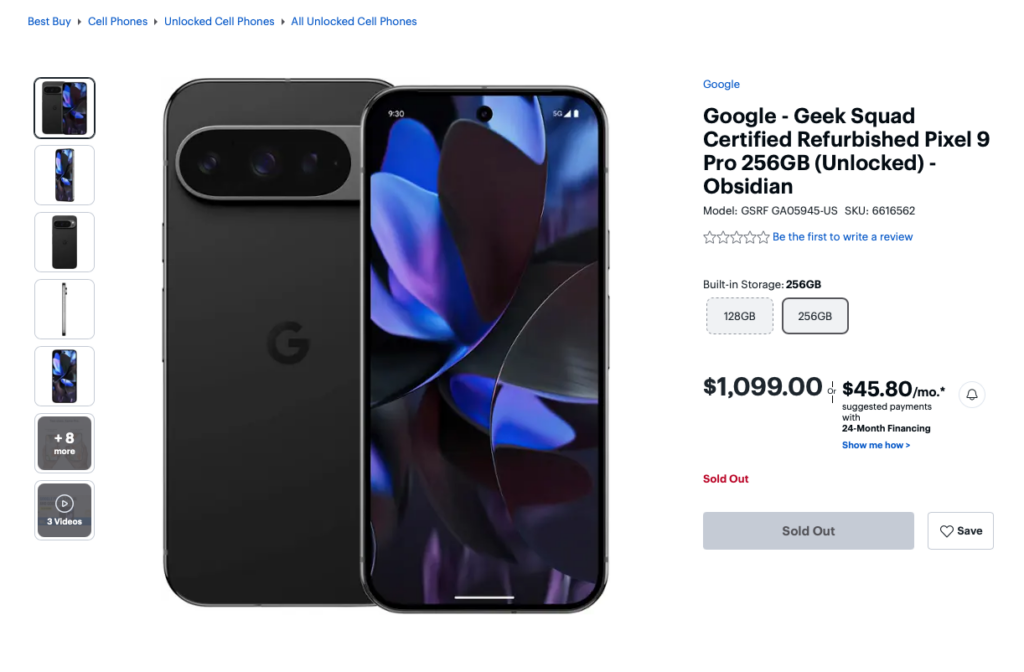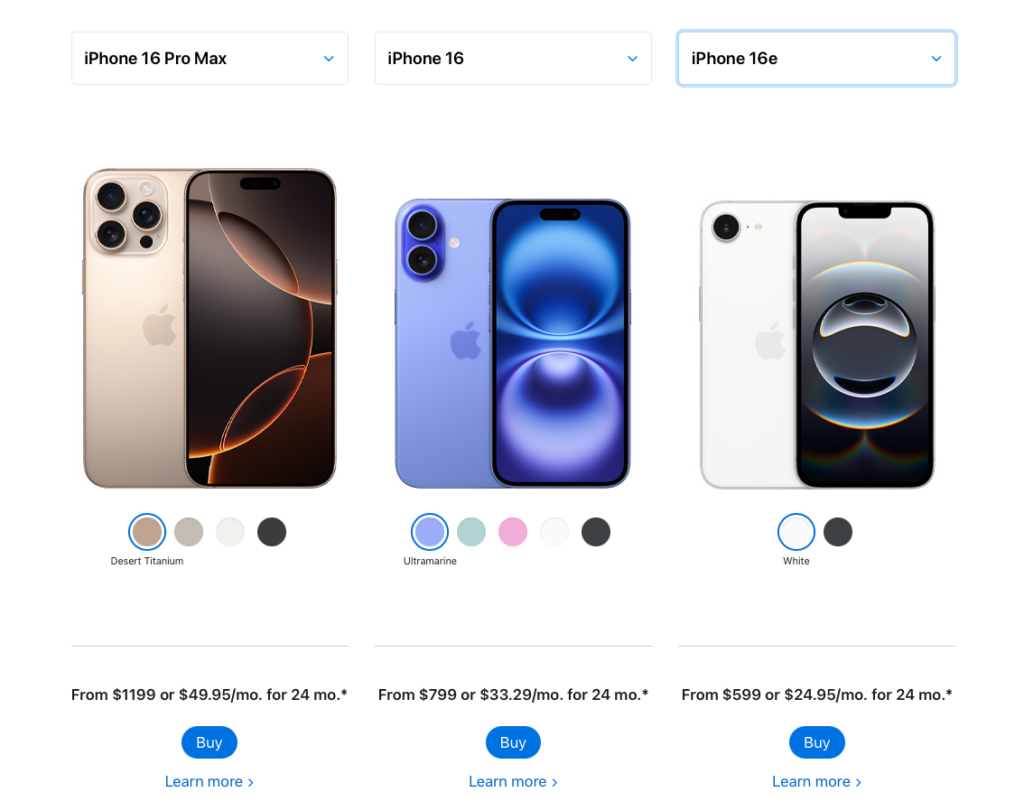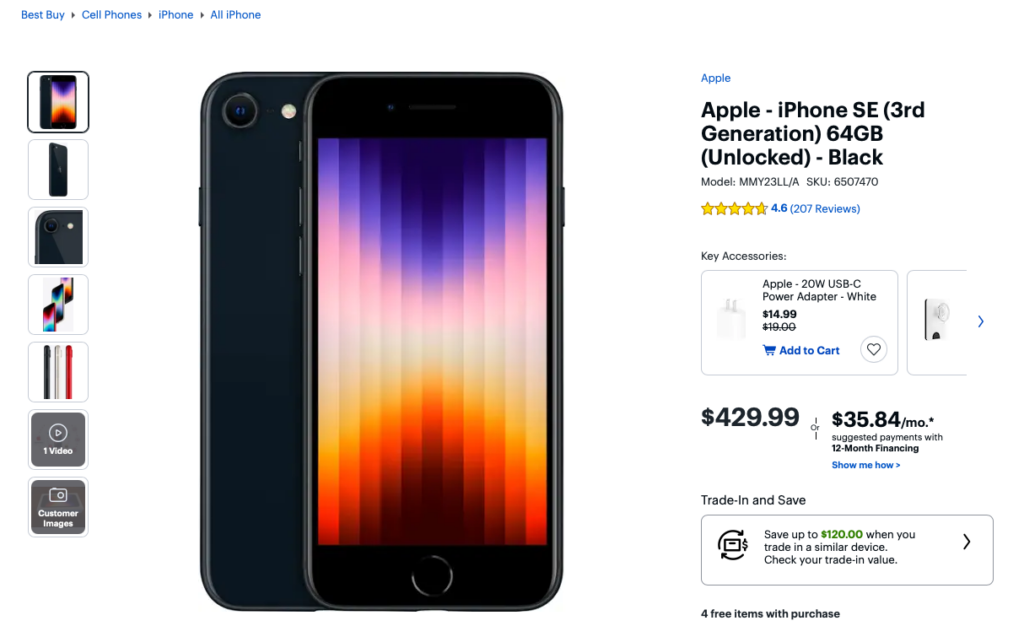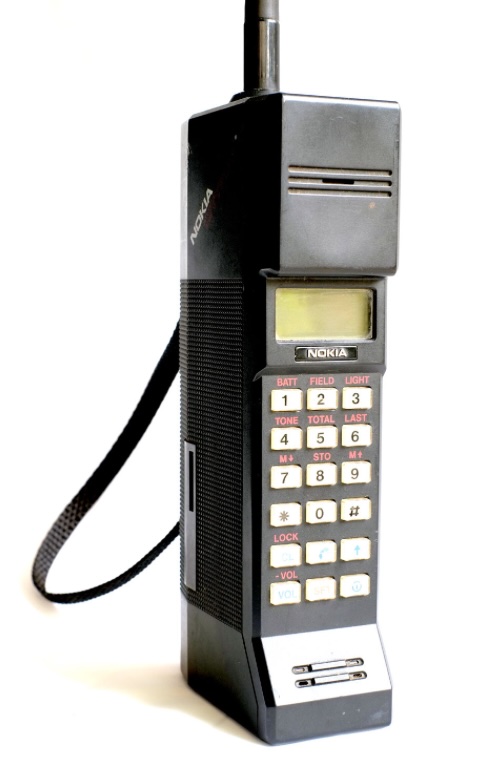This past Wednesday, Tony and I had yet another nice lunch at Napoli Deli. Great prices, outstanding food, huge portions and BYOB.
During lunch, Tony mentioned he bought a new cellphone and thought I should write a post about the choices and comparisons.
My initial thought was that I don’t have much to say. My wife and I have been iPhone-only for years, but then I remembered that I got a free Samsung phone when I joined T-Mobile, and I’ve had some experience with Kindle and a few other tablets that use Android, and I’ve had to work with my mom’s Android phone.
I also read a lot. While we always end up buying iPhones, I look around a bit before purchasing to make sure I’m not missing out on something cool.
iPhone
For those who aren’t that familiar, the iPhone is made by a little-known tech company called Apple. A new version of the iPhone comes out every year in September and there is quite a hullabaloo.
Apple sells quite a few devices. In 2022, sales dipped a bit. Apple sold a mere 225 million iPhones. Still seems like a lot.
There are currently over 1 billion active iPhone uses.
Here’s a great article from gadgetadvisor that gives some stats and history on the iPhone.
Apple’s iPhone runs a proprietary operating system called IOS. No other phone runs IOS, and Apple is pretty restrictive about the apps available on the iPhone. Writers often refer to this as a “walled garden” because Apple keeps such tight control over what runs on its hardware.
Android
Talking about Android is a little more complex. We’ll talk about why in a sec, but for now…
Operating System
Android is an operating system developed by Google (which is part of Alphabet). You can read more about Android here.
Hardware
When we talk hardware in this post, we’re talking about the phone itself. There are quite a few hardware manufacturers that make devices that run the Android operating system.
Google makes its own Pixel line of phones, but LG, Samsung, Huawei, and many others build and sell phones that run the Android operating system. And many tablets run Android as well.
This is very different than the Apple walled garden. Android is open source (others can modify it) and it runs on many different hardware platforms.
IOS is controlled by Apple and it only runs on Apple hardware.
Who’s Bigger?
That’s complicated as well.
More people use iPhone than any other phone. That’s largely because if you like the features of IOS and you like to say “Hey Siri” iPhone is your only choice.
There are far more phones out there that run Android than IOS, but those phones are made by many different hardware manufacturers and they have subtle differences in features and behavior.
So while there are more Android devices, the biggest Android phone maker – Samsung – is behind Apple in overall phone market share.
Here’s an interesting chart from statista.

OK, now that we know about Apple, iPhones, IOS, Android, Google and other vendors like Samsung and Huawei, let’s get to the phones.
Phones?
I no longer have a landline, so I do actually make calls on my iPhone. But, that is a dying art. Us old guys probably make more calls, but the kids today don’t call much anymore.
That means that for all of us, the phone isn’t really a phone. It’s a personal digital assistant (hey, I like that). Remember?

Read more here.
Requirements
Because we’re not just comparing single-function phones, we need to think about what we need from this device.
Before purchasing my most recent iPhone late last year, I went through this process. Sounds fun, right?
Too Damn Big!
I can’t remember the new feature that caused me to upgrade from an iPhone 5 to an iPhone 7, but that was the point that I entered the realm of really-big-phones.
Here’s how the progression went

iPhone 7 had a bigger screen, better resolution and was much faster, but it had to move to the back pocket. It was too big to fit up front.
I next upgraded to the iPhone 11 because I wanted face ID. This was cool. Until COVID hit 3 months after I upgraded. I’m wearing a mask 24×7 so I have to type my passcode. I want my touch ID back!
Eventually the masks went away, as did hand-washing and other unnecessary hygiene, and I’m loving face ID, but I’m lugging around an even bigger phone.
Smaller Phones
I realized this was craziness. How big do we need?
I considered a flip phone. Nice idea, but I’m hooked on Apple Car Play. I hop in my car, start it up, and my phone seamlessly connects. No wires, no buttons to press, it’s just on. It plays music, gives me directions and I can tell Siri to do things without pulling out my phone.
Then I was introduced to the iPhone SE. It’s the cheapest iPhone (I like the sound of that) and it’s the same size as my old iPhone 5.
Requirements…again
So before I race into a decision I may regret, I reviewed my requirements.
- CarPlay is a must
- Siri or equally capable voice assistant – on a good day I can get about 50% of the letters correct while typing on my phone – true of my iPad as well, so size doesn’t help. I need to be able to use voice commands.
- Apps – I’ve become addicted to a few
- Google home to control my wifi and heating
- Maps – I’m open to alternatives, but I need a good map app
- Music – I’m using Apple Music but open to alternatives
- Jabra – I need to control my hearing aids with an app – sorry flip phone
- BMW – Remote start through app – boy is this nice.
- USGA – enter golf scores for my handicap – can probably do this online, but that sounds like work
- Messages – 99% of communication is via text, including 2 factor codes. I need a phone that does messaging and it can’t be the flip phone keyboard where you hit the 2 button 3 times for a “C”

If you took my iPhone away, I might find other things I can’t live without, but these are the biggees.
IOS v. Android
The good news is that most apps are available on both operating systems. They may work a little differently, but they are functionally similar.
And while I can’t get apple music or messages on Android, there is a reasonable alternative.
All in all, I’ve decided I need a smartphone because of the apps, but either IOS or Android would meet my requirements.
Camera
According to the marketing people, this is a huge differentiator. Every new phone has a bigger and better camera. I’m not even sure what a mega-pixel is, but I know more is better.
I use my phone’s camera to take pictures of food, or of stuff I need to find at Home Depot.
A mega-pixel or 2 and a single lens seems to be sufficient.
Apple Ecosystem
This isn’t in the requirements, but it is a big nice to have for me.
I have an iPhone, an iPad, and iMac, a MacBook Air and AirPods. It is scary how well they work together.
I’m wearing my AirPods and listening to music from my iPhone. I come inside to watch a YouTube video on my iMac. When I press play, the music stops and the video soundtrack magically starts playing in my ears.
I’m on my iMac and I find something online at Home Depot. I highlight and copy, then I open the notes app on my phone and paste. That’s magic.
With IOS 18, there is an iPhone Mirroring app on my computer. If my phone is in the other room, I can open this app and my iPhone screen and all the apps show up on my computer screen. More magic.
I use apple music and my playlists sync across all devices. I know spotify does this as well, but still cool.
I’m sure there is a lot of stuff I missed, but Apple makes its stuff play nice together and they seem to add something new with every IOS release.
Simplicity
I’m a little out over my skis here, but I have seen a few things that make Android less attractive to me.
Android Updates
When Apple upgrades IOS, every eligible device gets the upgrade. With Android, this is not always the case. Hardware manufacturers may choose to adopt the new release or not and set their own schedule. My phone may not get a cool new feature that other Android users get.
Intuitive
Android is somewhat intuitive. I find that IOS is obvious.
My mom has a Samsung Android phone. I spent years in tech and am pretty good figuring things out. I have to search online any time I need to update android settings.
We tried to set up voice commands on her Samsung phone. My uncle, who has Android phones, took her phone for 2 weeks to train it to be able to call one of us with a voice command. Sadly, this was a failed endeavor.
“Hey Siri” just works.
I’ll invite comparisons here because I don’t have a lot to go by, but it seems Apple wins the simplicity race.
Price
You can get a Samsung Android phone for about $175 on Amazon. Seems to handle most of my requirements, except that it is big.

Android gets pricey too. If you want a top of the line Pixel 9 Pro, it’s $1,099 refurbished.

Apple’s newest line-up looks like this.

I bought the iPhone SE 3rd gen. I got it on sale for $399.

Wrap-Up
While my requirements could be met by either smartphone, when I add in my desire to stick within the Apple ecosystem, to work seamlessly with my AirPods, and my feeling that IOS is just easier to use, Apple was the logical choice for me.
Then when I found they had a much smaller phone for $399, it was a no-brainer.
I’m 3 months in, and other than face ID, there is nothing that my iPhone 11 had that I feel is missing on the SE. And, the SE has 5G. The 11 did not, so that’s a win.
The iPhone 11 was passed down to my wife who really could not care less about phone specs. She passed her capable iPhone 8 down to her mom, and we retired her mom’s iPhone 6. Everyone’s happy.
Funny…the iPhone 6 and the SE are the same size.
Size matters.
Let me know what you think. These are some facts, but mostly my impressions and opinions with limited Android experience. Have you had better results?


This was excellent!
I run IPhone SE for my personal phone and iPhone 13 for my work phone, I agree the SE is a better option
Nice article. I bought the iPhone 16, then a month later the 16e came out. Maybe I should’ve waited.